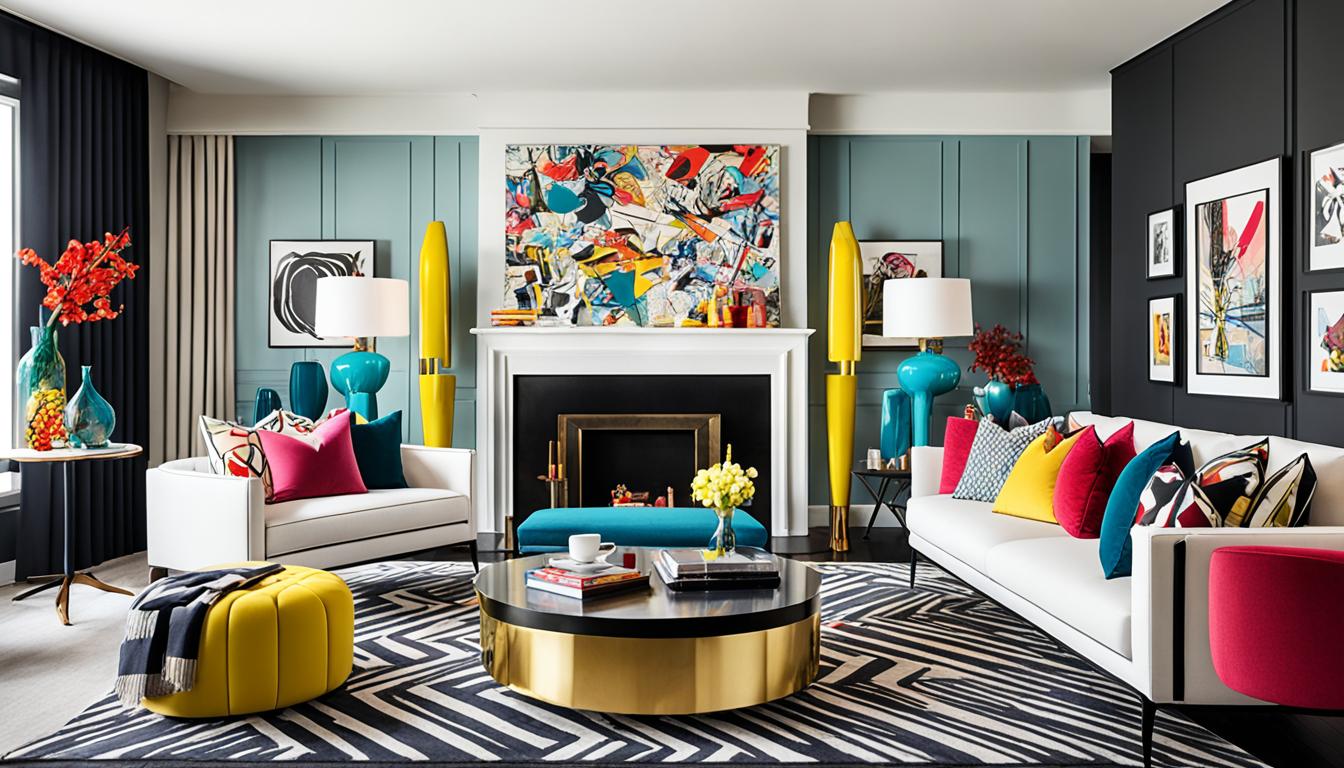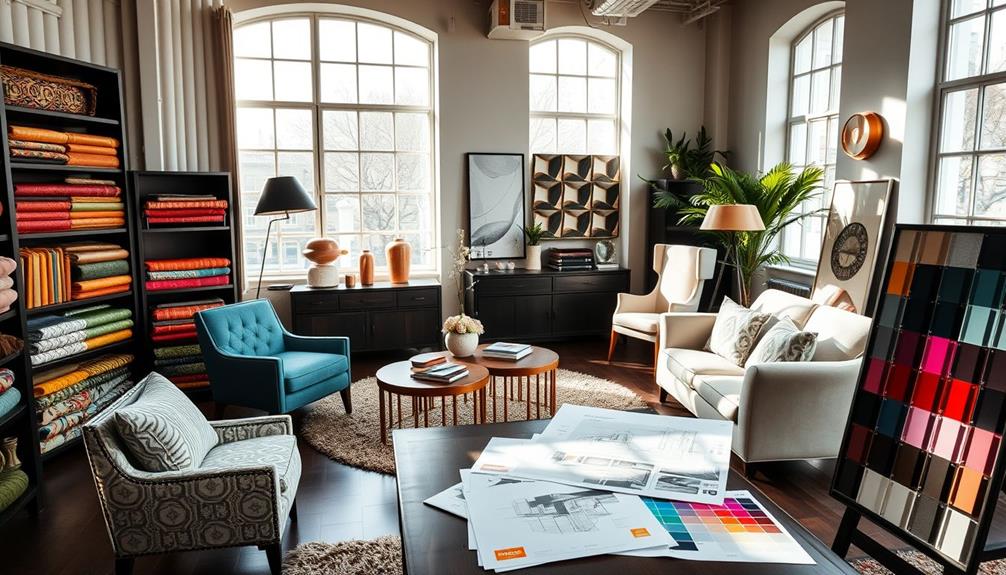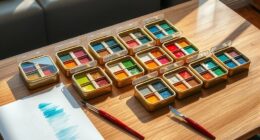Welcome to your go-to guide on how to do interior design on your own! This friendly and informative resource is tailored specifically for those who wish to explore DIY interior design. Whether you’re a complete beginner in interior design or someone looking to refine your skills, this guide will empower you to create spaces that are not only aesthetically pleasing but also functional and reflective of your personal style. By breaking down the steps involved, we’ll help you navigate the process with ease, ensuring that your design journey is both achievable and rewarding. So, roll up your sleeves and prepare to transform your living environment! To kickstart your journey, we’ll start by guiding you through the initial stages of gathering inspiration, understanding your space, and creating a vision board. From there, we’ll explore the fundamentals of color theory, furniture layout, and accessorizing. Additionally, we’ll provide you with valuable interior design mockup tips to help you visualize and fine-tune your ideas before implementation. With the knowledge and guidance provided in this guide, you’ll be well-equipped to tackle your interior design projects with confidence and creativity.
Key Takeaways
- Color is the primary influence when selecting interior products.
- Over 25 distinct interior design styles exist, helping you find your unique approach.
- Prioritize quality over brand recognition in your design choices.
- Look for certifications like Cradle to Cradle® and green building certifications.
- Having a plan before starting prevents a lack of cohesion in your space.
- A budget plan should accurately reflect your furnishing needs to avoid surprises.
- Establish a defined style to create a cohesive and personalized room.
Understanding the Basics of Interior Design
To navigate the world of interior design, it is vital to start with understanding interior design principles. A well-thought-out design can transform your space into a reflection of your personality and lifestyle. By defining your space and its purpose, you set the stage for effective design choices.
Defining Your Space and Its Purpose
When you approach interior design, defining your space involves evaluating its intended use. Consider whether the area will be a serene retreat for relaxation or an energetic hub for socializing. This clarity guides your decisions on color schemes, furniture placement, and overall layout. Here are some interior design tips to help you define your space:
- Reflect on the activities that will take place in the room.
- Determine how many people typically use the space.
- Identify storage needs to keep the area functional.
Key Elements of Interior Design
The essential elements of interior design include color, space, texture, lighting, furniture, and decor. Each aspect contributes significantly to how a room feels and functions. A keen eye on color palettes ties your dwelling together and creates a cohesive atmosphere. Below is a breakdown of these key elements:
| Element | Description | Considerations |
|---|---|---|
| Color | Sets the mood and atmosphere | Choose complementary and analogous color schemes |
| Space | Affects the layout and flow of a room | Utilize open space for movement |
| Texture | Adds depth and interest | Mix materials to create tactile variety |
| Lighting | Highlights features and sets the ambiance | Use natural and artificial light for balance |
| Furniture | Fulfills practical and aesthetic needs | Invest in key pieces for long-term comfort |
| Decor | Adds personality and style | Use accents like pillows and wall hangings wisely |

How to Do Interior Design on Your Own
Embarking on a DIY interior design journey requires a clear vision and the right inspiration. The process of creating your unique space can be thrilling, especially when you start by crafting a mood board. This tool helps you visualize the elements that resonate with your aesthetic, making the design process more enjoyable and structured.
Creating a Vision and Mood Board
A mood board serves as an essential starting point in your interior design project. Think of it as a canvas where you collect images, colors, textures, and anything that sparks creativity. Use a combination of sources such as Pinterest, magazines, and even social media platforms to gather ideas that inspire you. By visualizing different styles and themes, you begin to see a direction for your personal design aesthetic, making interior design inspiration more attainable.
Choosing Your Inspiration Object
Once you have a mood board, the next step is choosing inspiration objects. These can be anything from a unique piece of furniture, a striking artwork, or a decorative item that captures your eye. This object can act as a foundation for your color palette and design choices, guiding you as you select complementary pieces. Remember, the goal is to establish a cohesive feel that reflects your personality and style. By taking time to explore and curate your options, you enhance your ability in choosing inspiration objects that resonate with you.

Setting a Realistic Budget for Your Project
Establishing a realistic budget serves as a foundational step for any successful interior design project. To start the process of setting a budget, prioritize your expenditures into distinct categories: “must-haves,” “nice-to-haves,” and “not a priority.” This approach allows for informed decision-making while maintaining a clear financial framework.
Prioritizing Your Expenditures
Begin with an open dialogue about budget considerations early in the planning phase. Avoid waiting until the project has commenced to discuss finances. Direct conversations facilitate trust and develop a well-rounded understanding of the project’s scope. Include various costs in your project budget, such as:
- Demolition and disposal costs
- Contractor’s profit
- Design fees
- Freight and delivery charges
- Accessories and materials
Design fees can vary, so ensuring transparency in these costs is crucial. Designers often estimate that furnishing a home can involve expenses ranging from 7 to 10% of its total value, exclusive of renovations.
Understanding Cost Overruns
Budgeting for unforeseen circumstances proves essential in achieving affordable interior design. It’s wise to set aside a contingency fund of 10 to 20% of your total project budget. Such foresight helps mitigate the financial strain caused by unexpected expenses. When discussing cost overruns, consider the general estimate for major interior design projects, typically falling between $100 and $200 per square foot. Various other costs, including sales tax and delivery fees, can add between 15-20% to your budget.
Utilizing online budget planning tools like Excel can streamline your budgeting process, enabling you to document products, finishes, fixtures, and associated costs. Establishing a target investment amount and a design wish list can further align your expectations with your available budget. Always aim to gather quotes from multiple contractors to explore competitive pricing and options.

Essential Interior Design Techniques for DIY Projects
Mastering interior design techniques can elevate your DIY projects from ordinary to extraordinary. Two critical components of design include understanding color theory and implementing effective home lighting. These aspects not only enhance your space but also influence your overall experience within it.
Color Theory and Its Application
Color theory plays a significant role in transforming your living space. Different colors evoke varying emotions and moods, which makes selecting the right shades essential. By utilizing a cohesive color palette, you ensure a harmonious atmosphere. Start by gathering inspiration through various channels, like design blogs, Pinterest boards, and magazines. Use a “springboard object,” such as a piece of artwork or a fabric swatch, to guide your color scheme.
Here’s a concise breakdown of color relationships for your projects:
| Color Type | Description | Emotional Impact |
|---|---|---|
| Complementary | Colors opposite each other on the color wheel. | Create vibrant contrast and energy. |
| Analogous | Colors next to each other on the color wheel. | Provide harmony and tranquility. |
| Monochromatic | Various shades of a single color. | Exude sophistication and simplicity. |
Lighting Considerations
Lighting is another fundamental aspect that shapes the perception of color and design. Proper home lighting not only highlights your chosen colors but also sets the overall mood. Incorporate a combination of ambient, task, and accent lighting to create depth and interest throughout the space. Here are some tips to consider:
- Use soft white bulbs for a warm, inviting ambiance.
- Layer your lighting by combining overhead fixtures with floor and table lamps.
- Consider dimmers to adjust light intensity based on the time of day and activity.

By mastering color theory and lighting considerations, you can integrate effective interior design techniques into your DIY projects, making your space feel well-designed and inviting.
Implementing Home Decorating Ideas
When you begin to implement your home decorating ideas, the first step often involves selecting foundation furniture. This essential furniture includes key pieces such as sofas, tables, and chairs that will shape the layout and functionality of your space. Choosing the right foundation furniture largely determines how well your rooms flow and how comfortable they feel.
Choosing Foundation Furniture
Your selection of foundation furniture should align with your established mood board and color palette. It is advisable to consider the following factors:
- Functionality: Ensure the pieces serve their intended purpose—whether for relaxation, dining, or work.
- Scale and Proportion: Pick sizes that fit your space well, preventing overcrowding or empty areas.
- Style Cohesion: Choose furniture styles that complement each other and resonate with your overall design aesthetic.
A unique aspect of home decorating involves reimagining spaces. For instance, many people have discovered ways to use outdoor items indoors. Bringing in small indoor/outdoor rugs from the porch as accent rugs adds a fresh twist to your home. This approach helps create an inviting and spontaneous atmosphere.
Incorporating Personal Style
After establishing your foundation furniture, infuse your personal style in design by incorporating elements that resonate with you. Consider the following ideas:
- Utilize creative textiles, such as throw blankets, scarves, and pillows, in diverse ways.
- Update accent furnishings like urns, vases, and trendy seasonal items to give your space a refreshing look.
- Repaint or reupholster existing furniture to breathe new life into your decor.
- Consciously choose built-ins that match your style, ensuring they harmonize with the overall color palette.
Defining your style is crucial in this process. Start by envisioning the big picture and work your way to the details. Consider how a cohesive whole house color palette can tie different rooms together, guiding your choices in paint, accents, and decorative elements. A well-thought-out palette helps prevent clashes as you navigate from room to room.
Consider creating a focal point in your home using items you already have. This technique not only enhances visual interest but helps in personalizing your living space. Remember, decluttering is essential before decorating. It involves reviewing belongings and eliminating items that no longer serve a purpose, ensuring a cleaner, more organized space.

| Foundation Furniture | Personal Style Accent Ideas |
|---|---|
| Sofas | Unique throw pillows |
| Dining Tables | Colorful table runners |
| Chairs | Personal art pieces |
| Bed Frames | Layered blankets |
Your home should reflect your personality and style. By thoughtfully selecting foundation furniture and incorporating unique personal elements, your space will truly embody you.
Conclusion
Embarking on the journey of how to do interior design on your own can be both enriching and straightforward. By following the laid-out steps—from understanding design fundamentals to successfully implementing your ideas while adhering to a budget—you can cultivate a space that truly reflects your personal style and identity. Each DIY home project represents a stepping stone toward mastering the art of interior design, often leading to astounding results you might not have initially envisioned.
It’s important to remember that hands-on experience is essential; many of the most successful interior designers have navigated this path without formal qualifications. In fact, personal home projects not only provide a safe environment for making mistakes but also offer invaluable insights into quality and performance issues that are crucial in this field. As you document your renovations, you’ll build credibility while refining your skills, paving the way for more significant design endeavors.
In this interior design recap, embrace the creative process and enjoy experimenting with different styles—from Scandinavian simplicity to Bohemian flair. As you continue to explore the vast array of design influences and practical techniques, always leave space for growth and fresh ideas, ensuring your home remains not just a reflection of your taste but also a canvas for your evolving journey in design.








